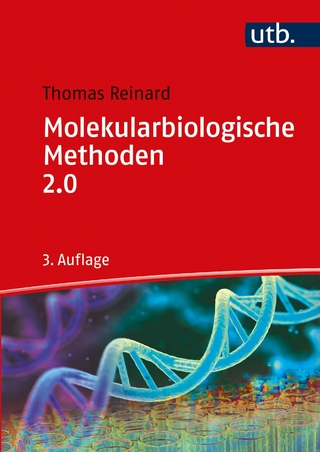
The Physics of Bacteria
Cambridge University Press (Verlag)
978-1-009-31352-0 (ISBN)
- Noch nicht erschienen (ca. Dezember 2024)
- Versandkostenfrei innerhalb Deutschlands
- Auch auf Rechnung
- Verfügbarkeit in der Filiale vor Ort prüfen
- Artikel merken
Bacteria are the most ubiquitous life-forms on Earth, and are studied extensively to gain insight into their function and understand how they interact with their environment. In recent years, bacterial biophysics has added a new dimension to this research by using the tools of physics to investigate the quantitative principles that underpin these cellular systems. This book provides a modern and cohesive introduction to bacterial biophysics, with a focus on biofilms, slimes and capsules. In the first of three sections, key techniques and models from the physical sciences that can be applied to bacterial problems are presented. Section 2 then provides a bacterial microbiology primer for physical scientists and an examination of single-cell phenomena. The final section explores interacting bacteria and biofilms from a physical perspective. Ideal for physics graduates interested in this important field, this book is also relevant for researchers in physical chemistry, bioengineering, mathematics and microbiology.
Dr Thomas Andrew Waigh is Reader in Biological Physics in the Department of Physics and Astronomy at the University of Manchester, UK. He has written three books: Applied Biophysics (Wiley, 2002), The Physics of Living Processes (Wiley, 2014) and Some Critical Questions in Biological Physics (IOP, 2017) and has published over 110 articles in peer reviewed journals. He has worked in the field of bacterial biophysics for over 10 years and organized many meetings on 'The physics of microorganisms. He currently works with industrialists on antimicrobial detergents.
Part I. Physical Tools: 1. How to track cells and molecules; 2. Statistics of bacterial motility; 3. The electrochemical potential of a cell; 4. Mesoscopic forces and adhesion; 5. Reaction-diffusion equations; 6. Polymeric structure and dynamics; 7. Colloidal structure and dynamics; 8. Liquid crystals; 9. Low Reynolds number hydrodynamics; 10. Viscoelasticity; 11. Systems biology; 12. Non-linear dynamics; 13. Experimental characterisation techniques; 14. Machine learning; Part II. Single Bacteria: 15. An introduction to bacteria; 16. Growth of bacteria; 17. Motility; 18. Chemotaxis and detection; 19. Molecular machines; 20. Capsules and slimes; Section III. Interacting Bacteria and Biofilms: 21. Dynamics and viscoelasticity of suspensions and biofilms; 22. Interacting populations; 23. Biofilm formation; 24. Action of antibiotics – a physical perspective; 25. Bacterial diseases; 26. Systems biology and synthetic biology with biofilms; 27. Simulation of cells and biofilms 12; 28. Communication between bacteria; 29. Bacteria and electricity; 30. Manipulation of biofilms; 31. Other applications; Appendix.
| Erscheint lt. Verlag | 31.12.2024 |
|---|---|
| Zusatzinfo | Worked examples or Exercises |
| Verlagsort | Cambridge |
| Sprache | englisch |
| Themenwelt | Naturwissenschaften ► Biologie ► Genetik / Molekularbiologie |
| Naturwissenschaften ► Biologie ► Mikrobiologie / Immunologie | |
| Naturwissenschaften ► Physik / Astronomie ► Angewandte Physik | |
| ISBN-10 | 1-009-31352-5 / 1009313525 |
| ISBN-13 | 978-1-009-31352-0 / 9781009313520 |
| Zustand | Neuware |
| Informationen gemäß Produktsicherheitsverordnung (GPSR) | |
| Haben Sie eine Frage zum Produkt? |
aus dem Bereich


